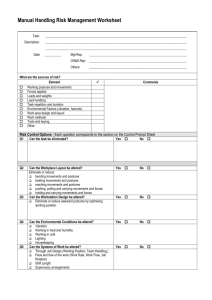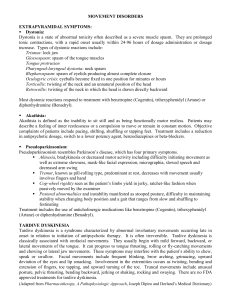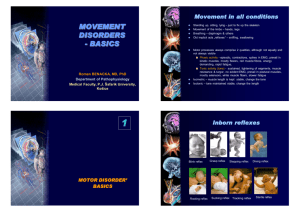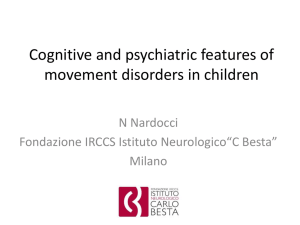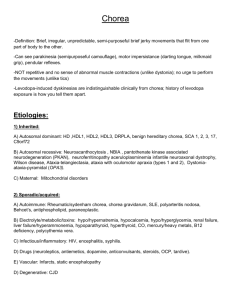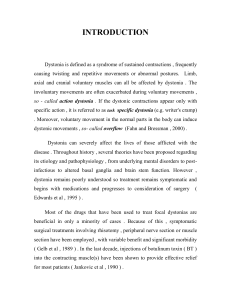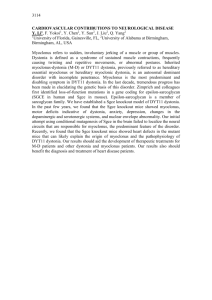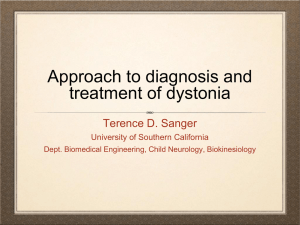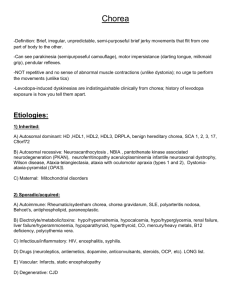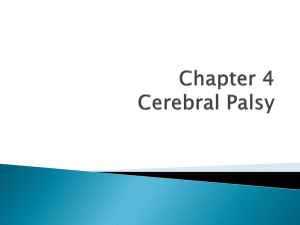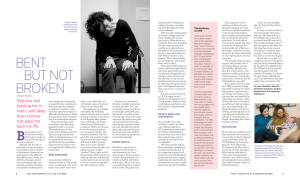Dyskinetic CP
advertisement
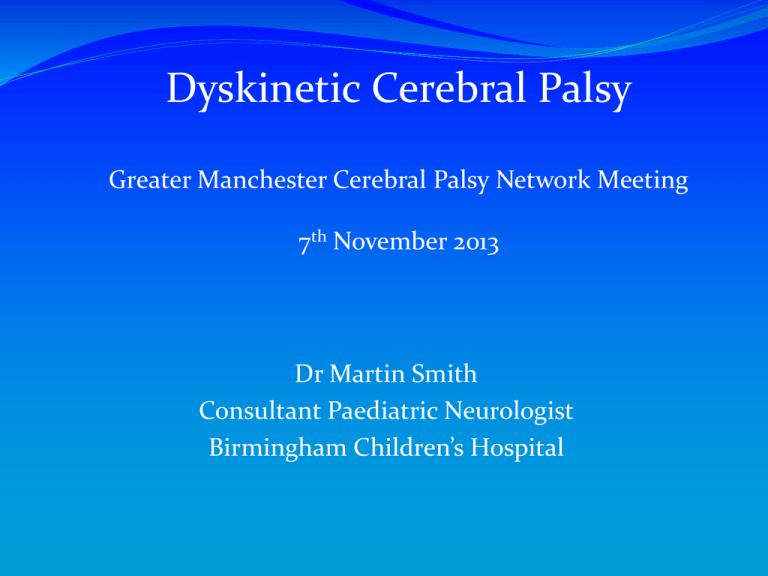
Dyskinetic Cerebral Palsy Greater Manchester Cerebral Palsy Network Meeting 7th November 2013 Dr Martin Smith Consultant Paediatric Neurologist Birmingham Children’s Hospital Athetosis Chorea Unsustained; flowing Intermittent; irregular Dystonia Sustained postures Abnormal (usually high) muscle tone Weakness Impaired motor control Dystonia Involuntary sustained or intermittent muscle contractions cause twisting and repetitive movements, and/or abnormal postures ‘Inserted postures and movements’ Chorea •Greek, khoreia, meaning dance •Involuntary, random (appearing), quick jerking movements •Abrupt, non-repetitive and arrthymic •Variable frequency and intensity Athetosis •Described by Hammond (1871) as “an inability to retain the fingers and toes in any position they might be placed, and by their continual motion” •Hyperkinetic movement disorder characterised by involuntary writhing movements of the distal extremities and peri-oral muscles •Some consider athetosis as a variant of dystonia Symmetrical high signal in ventrolateral thalamus and putamen following acute near total hypoxicischaemic injury in term infant Treatments Orthosis e.g. lycra, second skin etc Medication for dystonia e.g. Trihexiphenidyl, Clonidine, L-Dopa Medication for chorea e.g. Levitarecetam, Valproate, Tetrabenzine Intra-thecal Baclofen Deep brain stimulation Stem cells ??? Thanks to children and families for allowing me to use videos for teaching and education Thanks to Birmingham colleagues past and present Dr Hardev Pall Dr Manju Kurian Dr Stuart Green
